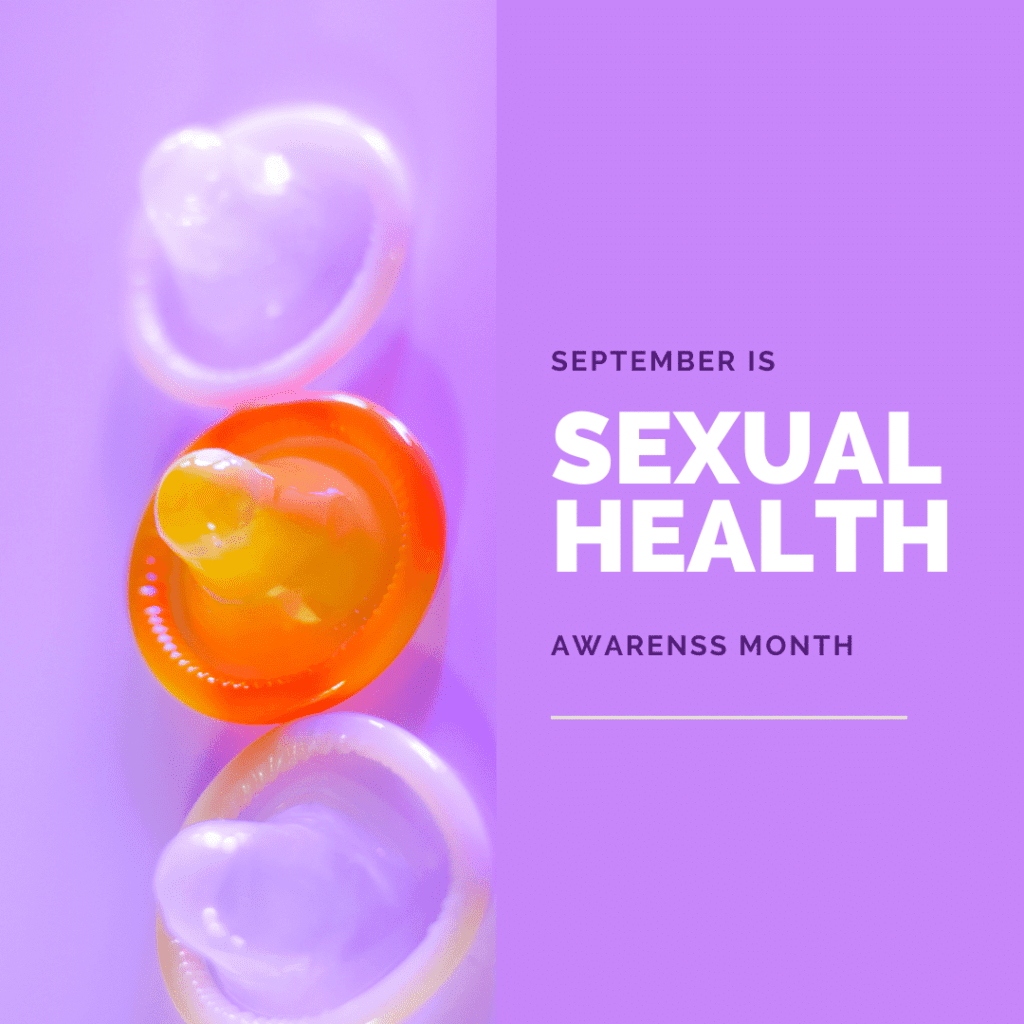Did you know that the American Sexual Health Association (ASHA) has declared September to be Sexual Health Month in honor of World Sexual Health Day on September 4th? The theme for this year is Sexual Pleasure in Times of COVID-19, which aims to promote sexual pleasure as a positive outcome from sexual activity. Sex itself has many health benefits including stress relief and increasing immune system function. However, sexual pleasure is another important benefit that should be experienced while partaking in sexual activities.
Although sex has the ability to be both healthy and pleasurable, it is important to remember that being sexual with another person also carries certain risks such as pregnancy or contracting a sexually transmitted infection (STI). That’s why it is important to practice safe sex in order to reduce you and your partner’s risk. Nowadays, there are a variety of “tools” that are available to assist you and your partner in practicing safer sex. One of the most commonly used tools are condoms. There are two types of condoms including:
External Condoms

External condoms, also known as male condoms, are thin sleeves that slip over the penis and are made from latex, polyurthane, polyisoprene, and lambskin. They are popular because they can protect you and your partner from unwanted pregnancies and STIs. In fact, according to the ASHA, condoms are the only widely available and proven method for reducing the transmission of HIV and other STIs.
Internal Condoms

Although not as common as external condoms, internal condoms can also be used to protect against unwanted pregnancies and STIs. An internal condom, sometimes called a female condom, is a pouch that is inserted into the vagina or anus before sexual activity. It can be inserted up to eight hours before sex and allows the wearer to be in control. However, internal condoms can be hard to find and generally cost more than external condoms. In some cases, internal condoms may also irritate the clitoris and vulva.
Why Practice Safe Sex?
Every year, 20 million new cases of STIs are diagnosed and about 50% of these cases are diagnosed in people ages 15-24. They can be passed from person to person during vaginal, oral, or anal sex. In rare cases, they can also be passed during intimate physical contact. There are a variety of STIs, however here are some of the most commonly diagnosed:
Human Papillomavirus (HPV)
HPV is so common that almost every person who is sexually active will be affected at some point during their lifetime. In most cases, you may not even known you are affected since most types of HPV doen’t cause noticeable symptoms and are quickly resolved by the body. However, certain types of HPV can cause genital warts, as well as cervical cancer. To reduce the risk of developing cancer from HPV, it is recommended that women ages 11-26 get vaccinated for HPV. It is also recommended to have regular pap smears, which can detect early signs of cervical cancer.
Chlamydia
About 25% of women who are infected with chlamydia will experience symptoms, however chlamydia is still the most commonly reported STI. The most common symptoms of chlamydia are irregular vaginal discharge and a burning sensation during urination. Since it is a bacterial infection, chlamydia can easily be treated with antibiotics.
Gonorrhea
Another common type of bacterial STI is gonorrhea, which has similar symptoms to chlamydia. Although most men will have symptoms, only 20% of women with gonorrhea will display symptoms. Gonorrhea can also be treated with antibiotics.
Syphilis
This STI has four stages. During the first stage, a sore will form. The second stage is characterized by a rash on the body, as well as sores in the mouth, vagina, or anus. During the third stage, symptoms will usually disappear. The fourth stage of syphilis only affects about 15% of untreated cases and is characterized by damage to the organs, nerves, and possibly brain. Syphilis can be treated with antibiotics and it is recommended to seek treatment early on.
Herpes
There are two strains of herpes that can cause genital herpes, but most cases are caused by HSV-2. Herpes is characterized by painful blisters around the vagina or anus, as well as possible blisters inside both. This STI is highly contagious and can be passed through skin to skin contact. Since herpes is a virus, it cannot be cured but it can be managed.

Dr. Geoffrey Zann is a Certified Robotic Da Vinci Surgeon, Board-certified by the American College of Obstetricians and Gynecologists, and a Diplomat of the American Board Obstetrics of Gynecology. He has been a member of the American Society for Colposcopy and Cervical Pathology, American Association of Gynecologic Laparoscopists, and the Hugh R. K. Barber Obstetric and Gynecologic Society.
